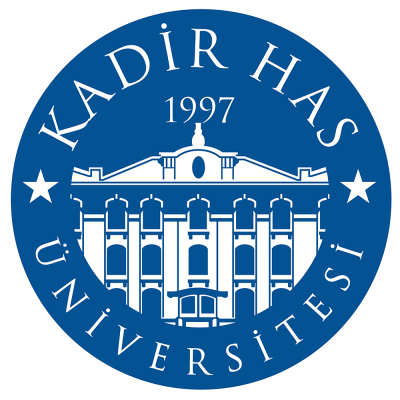Access Tutorial Slides
You will need to use the password sent to you via email.
* All times are indicated for LOCAL TIME ZONE ISTANBUL – (CEST+1 and GMT+3)
List of Tutorials
TUT-01: Non-Terrestrial Networks for Global Connectivity
TUT-02: Learning-Based Centralized and Distributed Techniques for mmWave and THz-Band Communications
TUT-01: Non-Terrestrial Networks for Global Connectivity
Date: Tuesday, 4 July
Time: 09.30-10.30 and 11.00-12.30
Presented by Aryan Kaushik, University of Sussex, UK, and Muhammad Zeeshan Shakir, University of the West of Scotland (UWS), UK
Abstract: There is an indispensable need of technical advancements and digital transformation for the next generation communication networks not only supporting terrestrial setups but also the emerging satellite and sky-oriented technologies. In the direction of non-terrestrial networks (NTNs) technology, evolving signal processing methods, edge and cloud computing, deep learning techniques, artificial intelligence (AI) assisted deployments for unmanned aerial vehicles (UAVs) in NTNs and coverage hole detection, etc., have drastically changed the current realization of the space, sky and terrestrial communication networks. The recent trends and benefits of implementing NTNs indicate an exponential trajectory in terms of the growth for our future wireless communication standards, resulting in a truly hyper-connected world with the type of global connectivity that can continue to close the digital divide that exists today. This tutorial will present a comprehensive overview of the emerging NTNs based wireless networking including fundamentals, requirements and emerging problem design concepts. The tutorial will cover key enabling technologies for NTNs such as AI, deep learning and edge computing enabled NTNs and wireless fronthaul/backhaul NTN technologies which lead to the development of exciting new vertical frameworks.
Biographies:
Prof. Aryan Kaushik is Assistant Professor at the University of Sussex, UK. Prior to that, he has been with University College London, UK, from 2020-21, University of Edinburgh, UK, from 2015-19, and Hong Kong University of Science and Technology, Hong Kong, from 2014-15. He has held visiting appointments at Imperial College London, UK, University of Luxembourg, Luxembourg, Beihang University, China, and Athena RC, Greece. He has been involved as research lead in UK MOD, DSTL, DASA and EPSRC funded projects on integrated sensing and communications including UK-wide UDRC consortium, PI in UKRI HEIF supported project in green and autonomous UAVs and Sussex-ROF funded project on integrated sensing and communications, and many other collaborative projects. He is an Associate Editor of the IEEE Open Journal of the Communications Society, IEEE Communications Letters, IET Signal Processing and IET Networks, and Lead Guest Editor for several Special Issues at IEEE and IET journals. He has been Track Chair for IEEE ICC 2024 and IEEE WCNC 2023, Tutorial/Invited Speaker at several IEEE conferences and workshops such as IEEE WCNC
2023 conference and workshop, WiSPNET 2023, and General Chair for workshops at conferences such as IEEE WCNC 2023, IEEE PIMRC 2022 and IEEE SECON 2022. His research interests are in signal processing for 6G communications, integrated sensing & communications, RIS & holographic surfaces, mmWave MIMO & satellite communication networks.
Prof. Muhammad Zeeshan Shakir is Professor of Wireless Communications at the University of the West of Scotland (UWS), UK has received over £3m research funding from Innovate UK, ERASMUS, QNRF and Scottish Govt. He has over 15 years’ experience in digital technologies, published over 150 research articles and contributed to 10 books. He is a recipient of numerous awards including Scottish Association of Minority Ethnic Educators (SAMEE) STEM Inspiring Diversity and Inclusion award 2022, SICSA (The Scottish Informatics and Computer Science Alliance) Best Poster Award 2022, IEEE Communications Society Fred W. Ellersick Award 2021, IEEE Communications Society and China Institute of Communications Best Journal Article Award 2019 and UWS STARS Award 2020 & 2018 for outstanding research, teaching and enterprise performances. He is a Fellow of Higher Education Academy, UK, Senior Member of IEEE, member of IEEE Communications Society, Royal Society of Edinburgh, Young Academy of Scotland and Scottish Parliament Framework Agreement Covid-19 Pandemic. He is serving as a chair and organizing committee in several IEEE flagship conferences, including Globecom, ICC and WCNC. He is a frequent keynote speaker at IEEE flagship conferences. He is Chair of IEEE Communications Society emerging technologies committee on backhaul/fronthaul, and Public Safety Technology Committee Informatics.
TUT-02: Learning-Based Centralized and Distributed Techniques for mmWave and THz-Band Communications
Date: Tuesday, 4 July
Time: 01.30-03.30 and 04.00-05.00
Presented by Ahmet M. Elbir, University of Luxembourg, Luxembourg
Abstract: The millimeter-wave (mm-Wave) massive MIMO communications employ hybrid analog-digital beamforming architectures to reduce the cost-power-size-hardware overheads. Lately, there is also a gradual push to move from the millimeter-wave (mmWave) to Terahertz (THz) frequencies for short-range communications and radar applications to exploit very wide THz bandwidths. At THz, ultramassive MIMO is an enabling technology to exploit even wider bandwidth while employing thousands of antennas. The design of the hybrid beamforming techniques requires the solution to difficult nonconvex optimization problems that involve a common performance metric as a cost function and several constraints related to the employed communication regime and the adopted architecture of the hybrid system(s). There is no standard methodology for solving such problems and usually, the derivation of an efficient solution is a very challenging task. Since optimization-based approaches suffer from high computational complexity and their performance strongly relies on the perfect channel condition, we introduce deep learning (DL) techniques that provide robust performance while designing a hybrid beamformer. In this tutorial, the audience will learn about applying DL to various aspects of hybrid beamforming including distributed sensors, channel estimation, antenna selection, wideband beamforming, and spatial modulation. In addition, we will examine these concepts in the context of joint radar-communications architectures.
Biography:
Ahmet M. Elbir (S’08-M’14-SM’20) received the B.S. degree with Honors from Firat University, Turkey, in 2009, and the Ph.D. degree from the Middle East Technical University (METU), Turkey, in 2016, both in electrical engineering. He is currently a research fellow at University of Luxembourg, Luxembourg. He has held visiting postdoctoral researcher positions at Koc University, Turkey in 2020-2021; Carleton University, Canada in 2022-2023; and University of Hertfordshire, UK in 2021-2023. His research interests include array signal processing, sparsity-driven convex optimization, signal processing for communications, and deep learning for multi-antenna systems. He serves as an associate editor for IEEE Access and Frontiers in Communications and Networks. Dr. Elbir is the recipient of 2016 METU Best Ph.D. thesis award for his doctoral studies and The IET Radar, Sonar & Navigations Best Paper Award in 2022.
TUT-03: An Overview of Signal Processing for Massive MIMO and Localization with Non-ideal Transceivers
Date: Tuesday, 4 July
Time: 01.30-03.30 and 04.00-05.00
Presenters: Salama S. Ikki, Lakehead University, Canada; Ayse E. Canbilen, Konya Technical University, Turkey; Deeb Tubail, Lakehead University, Canada
Abstract: Massive Multiple-Input Multiple-Output (MIMO) technologies are one of the most promising developments for fifth-generation (5G) cellular communications and wireless networks in general. In this technology, each cell has a base station with many antennas, allowing simultaneous use of the same resources (e.g., frequency and/or time slots) by multiple users of a cell (half-duplex or full-duplex modes). Therefore, massive MIMO systems can provide very high spectral and power efficiency. Furthermore, localization (position and orientation estimation) is envisioned as a key enabler to satisfy the requirements of communication and context-aware services. Using uplink or downlink pilot signals, user localization can be achieved based on delay and angle estimation.
However, these new technologies (massive MIMO and localization) suffer from some important limitations. One such limitation is that non-ideal transceivers (or hardware impairments) distort the signals at both the transmitter and receiver sides, and thus affect the localization and communication performance. Non-ideal transceivers greatly burden modern wireless communication systems due to compactness, least complexity, cost-effectiveness, and high energy efficiency. Since channel estimation is indispensable to massive MIMO and localization, it is important to note the deleterious effects of these impaired transceivers in this regard as well.
This tutorial will: 1) mathematically demonstrate (from the lens of signal processing) the impact of non-ideal transceivers and channel state information on Massive MIMO and localization, 2) present key challenges due to hardware imperfections, including the limitations on performance as well as problems in optimization, and 3) provide a survey of state-of-the-art methodologies intended for classical problems of waveform design, modulation, beamforming, channel estimation, and data detection.
Biographies:
Prof. Salama S. Ikki (Senior Member, IEEE) is a Visiting Research Professor (Nokia Scholarship) with Aalto University, Helsinki, Finland, in 2022. He is currently an Associate Professor and the Research Chair of Wireless Communications at Lakehead University, Thunder Bay, ON, Canada. His research group has made substantial contributions to 4G and 5G wireless technologies. He is the author of more than 100 journals and conference papers. He has more than 5500 citations and an H-index of 36. His group’s current research interests include massive MIMO, cell-free massive MIMO, visible light communications, and wireless sensor networks. He was the recipient of several awards for his research, teaching, and services.
Dr. Ayse E. Canbilen (Member, IEEE) received her Ph.D. degree from Konya Technical University in 2019. From 2017 to 2018, she was with the Department of Electrical Engineering, Lakehead University, Thunder Bay, ON, Canada, as a Visiting Researcher. She is currently an Associate Professor at the Department of Electrical and Electronics Engineering, Konya Technical University, Konya, Turkey. Her primary research interests include 5G+ systems, index modulation techniques, reconfigurable intelligent surfaces, and visible light communications. She has been serving as a Reviewer for many of the IEEE journals, such as IEEE Transactions on Communications, IEEE Transactions on Wireless Communications, IEEE Transactions on Vehicular Technology, IEEE Communications Letters, and IEEE Access.
Deeb Tubail received his B.S. degree (Hons.) in electrical engineering and his M.Sc. degree (Hons.) in telecommunications from the Islamic University of Gaza, Palestine, in 2009 and 2014, respectively. During his Master’s research, he conducted research in the area of microwaves, specifically in coupled-resonators circuits and microwave devices. After that, his research interests branched out to wireless communications in physical-layer security, interference alignment, multiuser MIMO systems, and optimization. Later, he became a Ph.D. student in the Electrical and Computer Engineering Department at Lakehead University, Canada, in 2020, where he is currently studying wireless communication in MIMO systems, estimation, localization and performance analysis.






